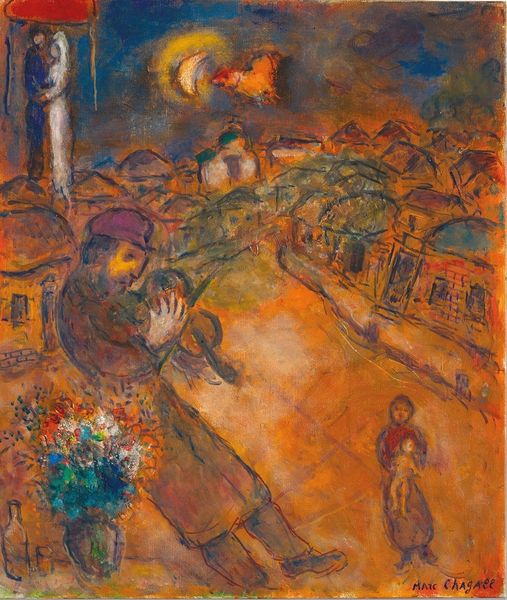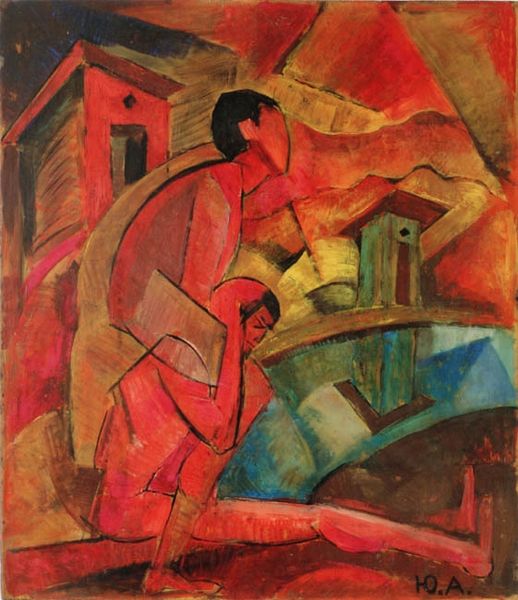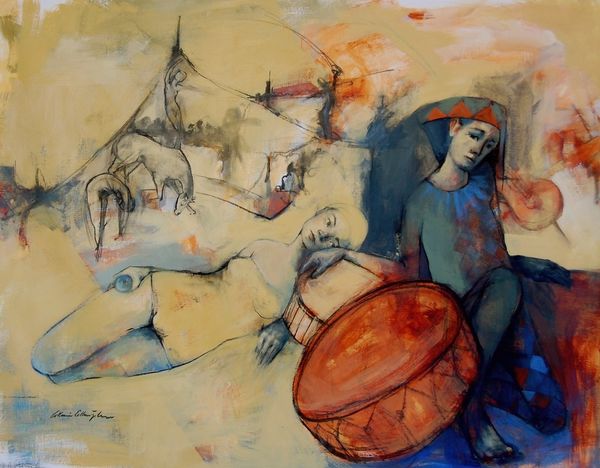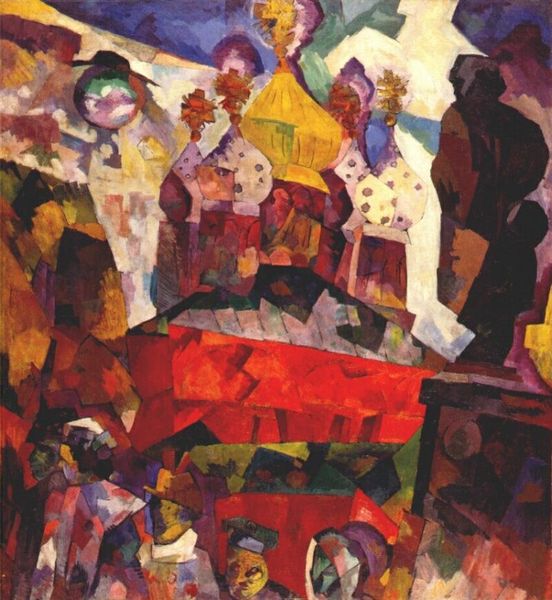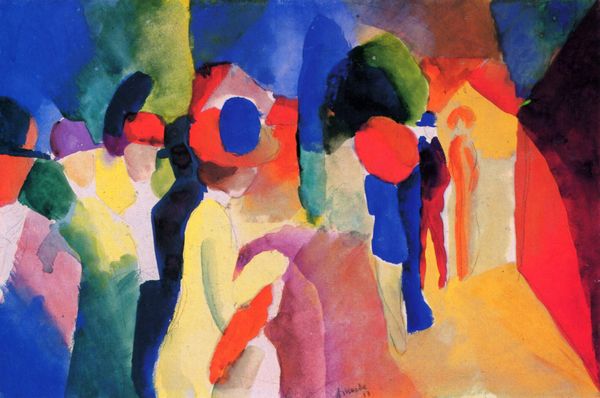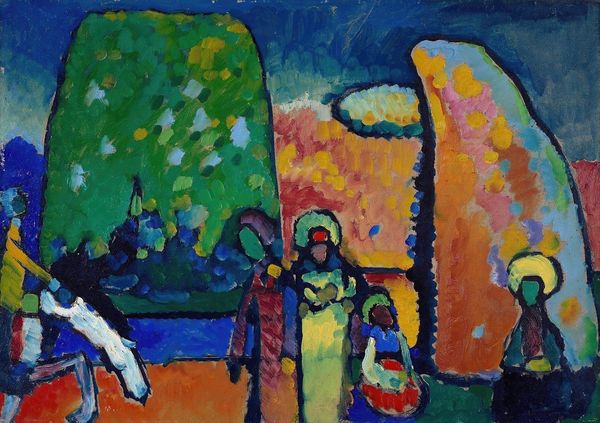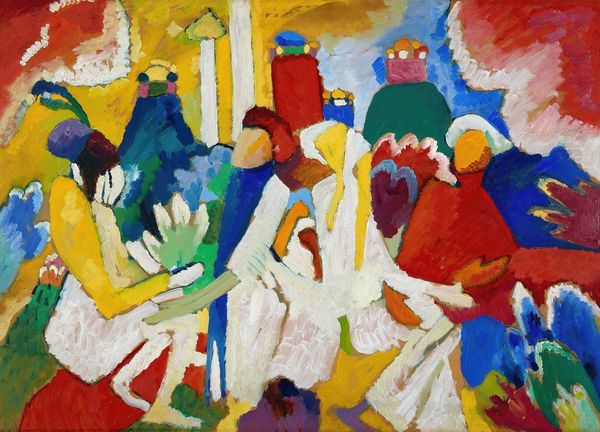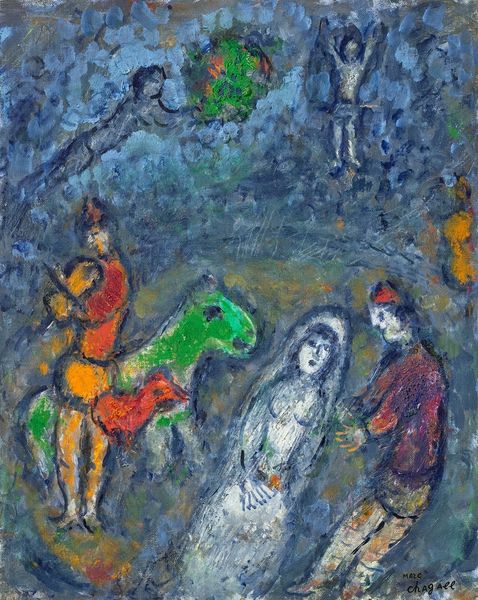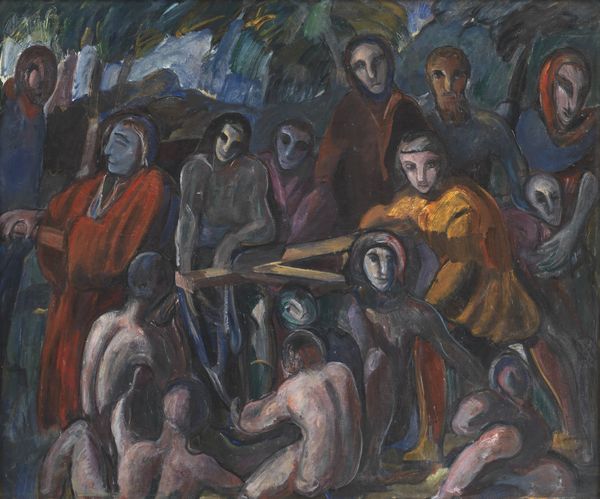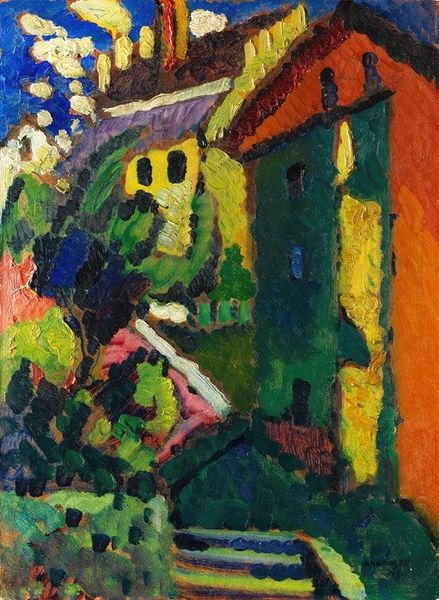
Copyright: Public domain
Editor: This is Victor Palmov's "Willage. Horse Taming," painted in 1927, using oil paints. The bold use of color really strikes me – especially that vibrant red horse. What can you tell me about this painting? Curator: Notice the visible brushstrokes and the thickly applied paint. This points to the artist's active engagement with the materiality of the medium. Consider how the pigment itself conveys meaning, specifically, the implications of readily available paint for representing this scene of rural life. It suggests a shift in art production – from scarcity to relative abundance of materials. How might the accessibility of these materials reflect broader changes in the economic landscape of the time? Editor: That's a perspective I hadn't considered. So, you're saying the Fauvist style connects to the socioeconomic context? The painting isn't just a representation, but it also embodies the means of production of that era? Curator: Exactly! Think about the depiction of labor. The horse-taming isn’t romanticized; it looks challenging, perhaps even unsettling, with those expressive faces. Doesn't it make you think about the changing role of agricultural labor, as viewed through a materialist lens? Editor: I see. So, by examining the material qualities and the way labor is presented, we can gain insights into the cultural and economic context surrounding the painting's creation. It's not just about the image, but also about how it was made and the conditions of its making. Thank you for the explanation. Curator: Indeed! Paying attention to materiality really does unlock new ways to interpret art.
Comments
No comments
Be the first to comment and join the conversation on the ultimate creative platform.
